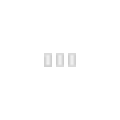-The 2811DC15 (and 2811DC30) controllers accepts 2811 pixel data input and drives 15 or 30 DC channels.
-Appears as 5 pixels in a pixel network when driven by a pixel controller and lighting software
Features
- DC input (5V - 35V) (large screw terminals)
- 30A ATX (automotive)blade fuse maximum size. (10A supplied)
- 3A per channel. 30A maximum per board
- Common anode (positive) configuration.
- Output terminals arranged as V+, Ch, Ch, Ch (particularly suits RGB)
- Electrically isolated input. 3 pin pixel data input and data output plugs isolated from DC dimmer circuitry
DC Input
The large 2 way green connector is the DC inputs from your power supply. The +V terminal is positive and the -V terminal is negative or ground. Any DC voltage in the range of 5V to 35V can be used. There is a standard ATX (automotive) fuse adjacent to the power terminals. The board comes supplied with a10A fuse fitted. Fuses up to 30A can be used. It is recommended changing the fuse to the closest size for the total current that the board is controlling.
Fuse
One fuse protects the dimmer circuitry. The pcb is supplied with a 10A ATX automotive style fuse. This fuse can be replaced with a smaller or larger capacity 1 to suit the application. A maximum of a 30A fuse can be installed.
Channel Outputs
There are 15 channel outputs. The maximum load per channel is 3 Amps, but the overall limit is 30 Amps. This means that you can't turn on all 15 outputs with the maximum load. In reality, this should not be a problem as most loads will be less than 2 Amps.
Each group of 3 outputs is grouped into 4 terminals. These are the 3 outputs and a common positive. RGB lights with a single common anode should have the common wire connected to the terminal +V and the red, green and blue wires to channels 1,2,3 (or 4,5,6 etc). The order and specific channels is actually dependant on what is configured in your sequencing software. For lights that have single colours (or single channels) per pair of wires then 1 wire gets connected to the +V and 1 gets connected to the channel output. For led lights which require the polarity to be around the right way then the anode (positive) gets connected to +V and the cathode (negative) goes to the channel. For lights that do not have three channels commoned then 3 wires will be joined and fitted to the +V for the 3 channels.
Each group of 3 outputs is grouped into 4 terminals. These are the 3 outputs and a common positive. RGB lights with a single common anode should have the common wire connected to the terminal +V and the red, green and blue wires to channels 1,2,3 (or 4,5,6 etc). The order and specific channels is actually dependant on what is configured in your sequencing software. For lights that have single colours (or single channels) per pair of wires then 1 wire gets connected to the +V and 1 gets connected to the channel output. For led lights which require the polarity to be around the right way then the anode (positive) gets connected to +V and the cathode (negative) goes to the channel. For lights that do not have three channels commoned then 3 wires will be joined and fitted to the +V for the 3 channels.
SPI Data Input and Output
The pcb has 2 terminals blocks for getting the SPI / pixel data into and out of the pcb. These are removable screw terminals and the wire that goes into each position is marked on the pcb. The data into the pcb comes in via the D.In terminal and data out to other boards or pixels goes out the D.Out terminals. The 3 terminals are GND, +VE and Data
5V Jumper
There is a jumper on the pcb that is ONLY to be installed if the power supplying the pcb for the DC dimmer section is 5V. If this jumper is installed and ANY voltage higher than 5.1V is applied to the power terminals then damage to the board will result. If the jumper isn’t installed and the board is powered by 5V then unpredictable lighting and no data output will occur.
Fault finding
No lights working
- Fuse is blown
- Data in (D.In) and Data out (D.Out) swapped
- Pixel power is too low to control input logic. Power injection at some point/s along pixel string may be required.
- Resistor R60 has been burnt out by the 5V only jumper being installed and more than 5V having been applied to the power terminals. 1 ohm resistor will need to be replaced.
- Mosfet transistor has been damaged. The mosfet must be replaced with the exact same type to ensure correct operation
- PCB track has been burnt out. Should be evident if bottom of pcb is inspected
- Mosfet transistor has been damaged. The mosfet must be replaced with the exact same type to get correct operation
- Fuse selection too low for lights that are connected
- 1 or more lights connected have short circuited wires
User Manual
| Hanson Electronics website
| |
|---|---|
| DC Controllers (DMX512 In) | AAHmega60 (Updating) · DMX36 · DMX18
|
| DC Controllers (SPI In) | 2811 to DC: 2811DC30 · 2811DC15 · 2801 to DC: 2801DC30 · 2801DC15
|
| DC Controllers (2 wire/2 channel) | DMX512 to DC: DMX2-30 · DMX2-18 · 2811 to DC: 2811DC2-30
|
| FPP Device Capes | Pi: PI36 · rPI-28D · rPI-P10 · BBB: Octoscrolla · HE123 |
This page has been seen 3,503 times.
-
-
Created by onLast updated by on
-
- Contributors:

